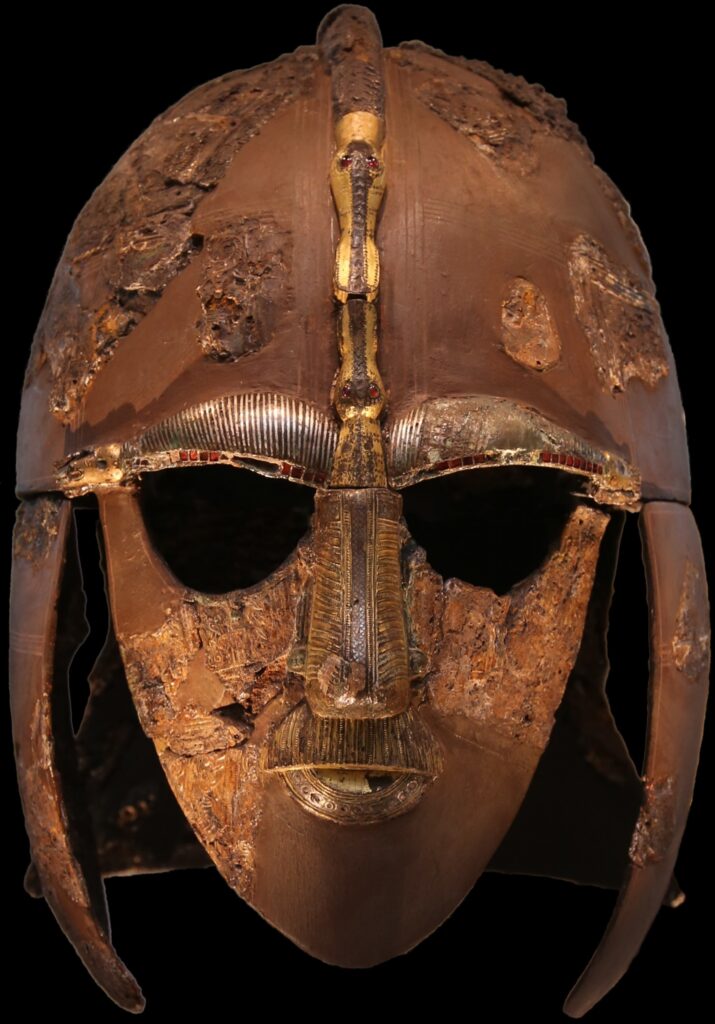The Sutton Hoo helmet is a true marvel of the early medieval period, a testament to the artistic and technical prowess of Anglo-Saxon craftsmen. This exceptional artifact, one of only four complete helmets to have survived from that era, has captivated historians, archaeologists, and the general public alike. Its haunting appearance and the intricate details that adorn its surface have made it an enduring icon of the Anglo-Saxon world.
The Discovery of the Sutton Hoo Helmet
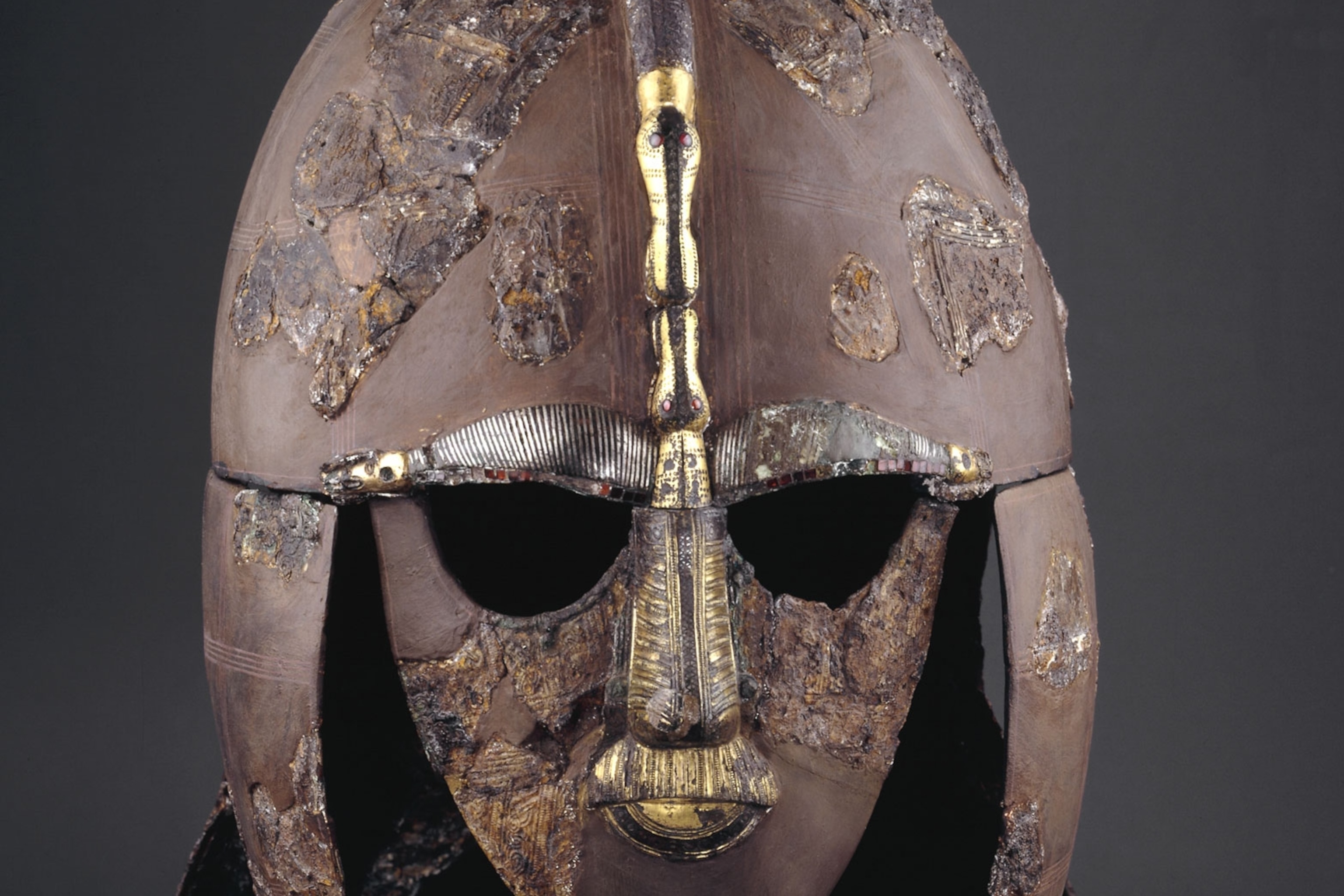
The Sutton Hoo helmet was discovered in 1939, in the famous ship burial mound at Sutton Hoo, located in the English county of Suffolk. The burial site, which dates back to the late 6th or early 7th century CE, was unearthed by a team of archaeologists led by Basil Brown, under the direction of landowner Mrs. Edith M. Pretty.
The helmet was found in a remarkably fragmented state, with its various components scattered throughout the burial chamber. It took years of painstaking conservation and reconstruction efforts to piece the helmet back together, revealing its true grandeur and complexity.
The Anatomy of the Sutton Hoo Helmet
The Sutton Hoo helmet is a remarkable example of Anglo-Saxon metalworking and craftsmanship. It consists of an iron cap with a prominent crest, a neck guard, cheek-pieces, and a face mask. The helmet was originally covered in tinned copper alloy panels, which were decorated with intricate animal and warrior motifs.
One of the most striking features of the helmet is the way its various elements come together to form the image of a flying beast. The mouth, nose, and eyebrows of the face mask create a haunting, almost supernatural appearance, evoking the power and ferocity of a mythical creature.
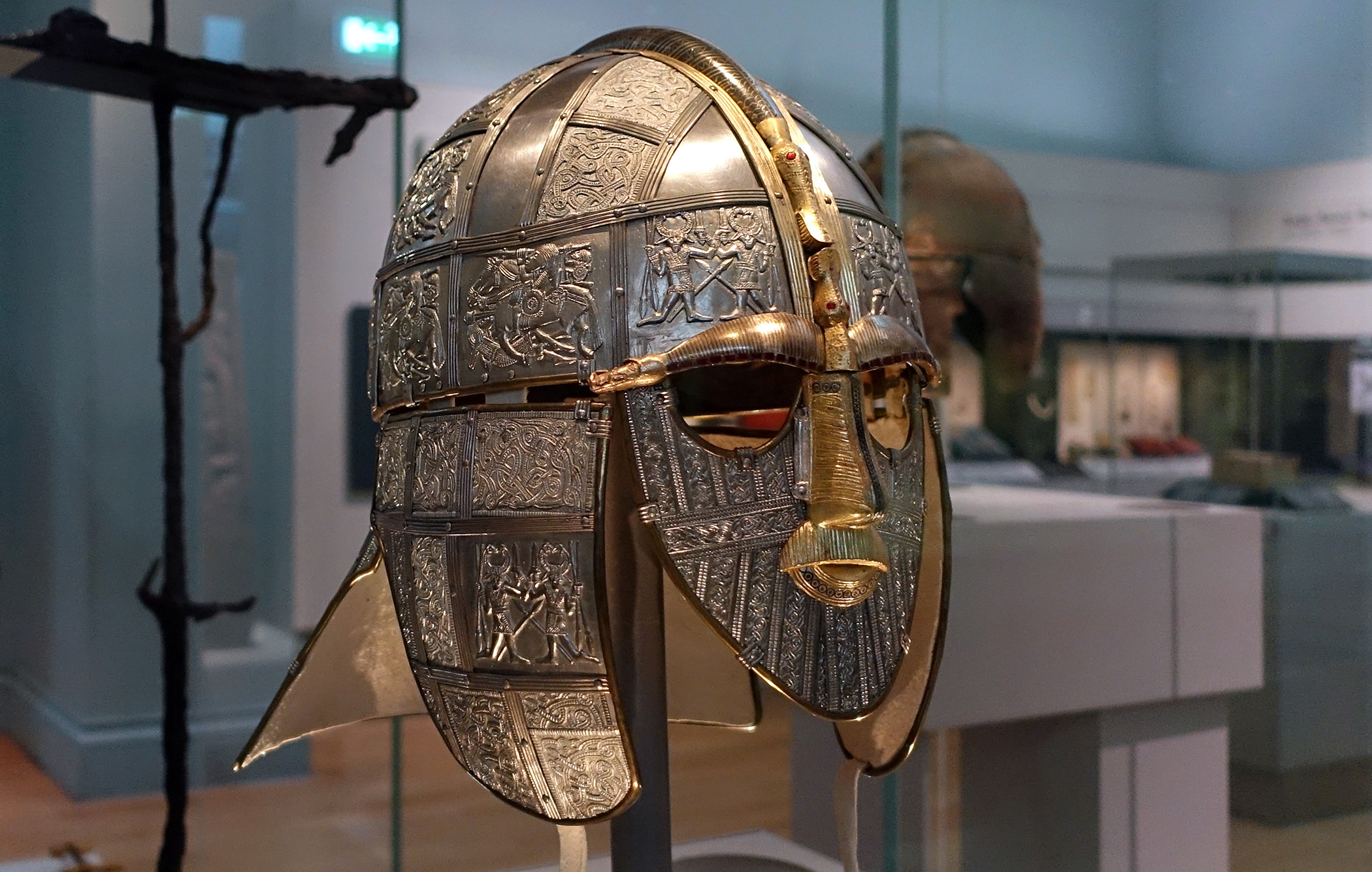
The Symbolism and Significance of the Sutton Hoo Helmet
The Sutton Hoo helmet was undoubtedly a symbol of great status and power within the Anglo-Saxon world. The scarcity of surviving helmets from this period suggests that they were reserved for only the most elite members of society, likely high-ranking warriors or nobility.
The intricate decoration and craftsmanship of the helmet suggest that it was not merely a functional piece of equipment, but also a statement of the wearer’s wealth, authority, and connection to the divine. The animal and warrior motifs that adorn the surface of the helmet may have held deep symbolic meaning, representing the wearer’s strength, bravery, and connection to the natural world.
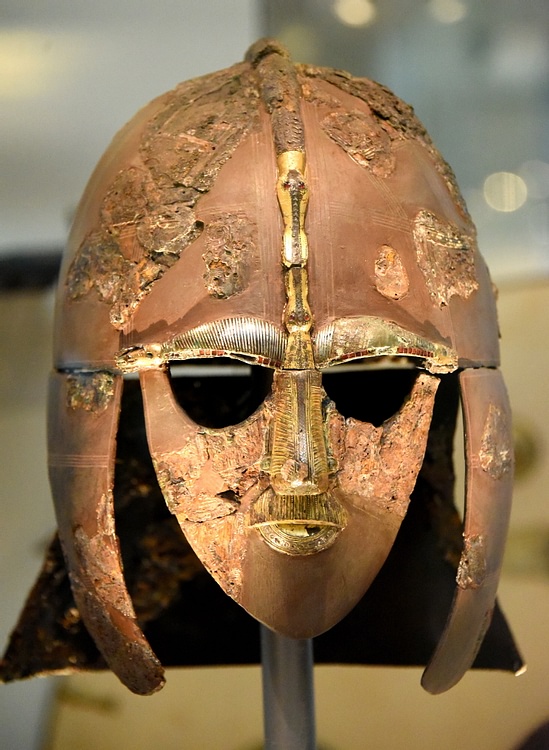
Moreover, the helmet’s similarities to contemporaneous helmets found in eastern Sweden indicate the existence of shared cultural traditions and interactions between the Anglo-Saxons and their Scandinavian neighbors. This cross-cultural exchange and the dissemination of artistic styles and techniques further underscores the broader significance of the Sutton Hoo helmet within the context of early medieval Europe.
The Sutton Hoo Helmet and the Anglo-Saxon World
The Sutton Hoo helmet offers a rare and invaluable glimpse into the social, political, and cultural landscape of Anglo-Saxon England. As one of the few complete helmets to have survived from this era, it provides crucial insights into the military and ceremonial practices of the time, as well as the artistic sensibilities and technological capabilities of Anglo-Saxon craftsmen.
The helmet’s association with the Sutton Hoo ship burial, which is believed to have belonged to a powerful Anglo-Saxon king or chieftain, further reinforces its status as a symbol of elite authority and power. The richness of the burial goods, including the helmet, swords, and other precious artifacts, suggests that the individual interred in the mound was a figure of immense importance within the Anglo-Saxon social hierarchy.
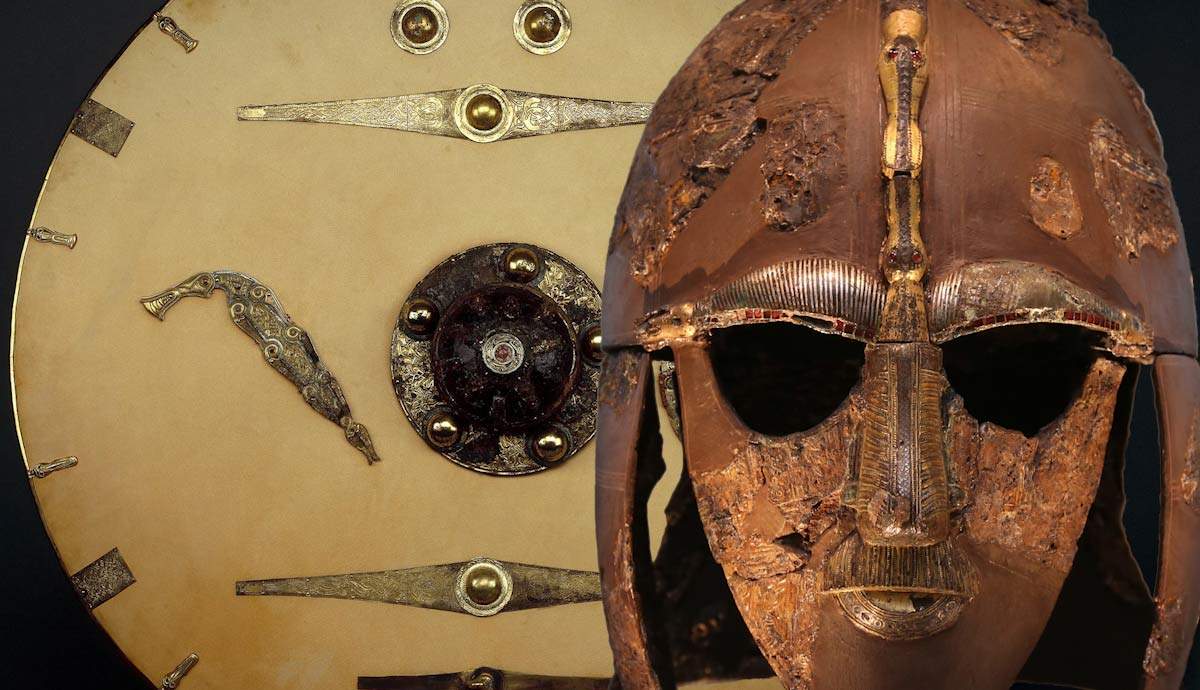
The Legacy of the Sutton Hoo Helmet
The Sutton Hoo helmet has endured as a captivating and iconic representation of the early medieval period. Its exceptional survival and the haunting beauty of its design have made it a beloved object of study and fascination for scholars and the general public alike.
The helmet’s influence can be seen in various forms of artistic and cultural expression, from literature and film to modern design and fashion. Its striking visual motifs and the aura of mystery and power that surrounds it have captured the imagination of countless individuals, inspiring them to delve deeper into the rich tapestry of Anglo-Saxon history and culture.
Conclusion

The Sutton Hoo helmet stands as a testament to the ingenuity, artistry, and cultural sophistication of the Anglo-Saxons. Its survival and the ongoing efforts to unravel its mysteries have contributed immensely to our understanding of this pivotal era in European history.
As we continue to study and appreciate this remarkable artifact, we are reminded of the enduring legacy of the Anglo-Saxons and the profound impact they had on the shaping of the medieval world. The Sutton Hoo helmet is not merely an object of historical significance, but a window into the past that continues to captivate and inspire us in the present day.
Perpective through video
